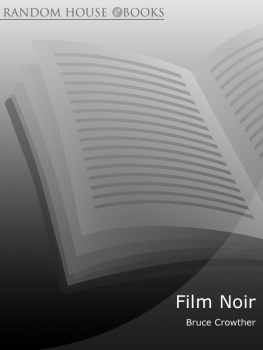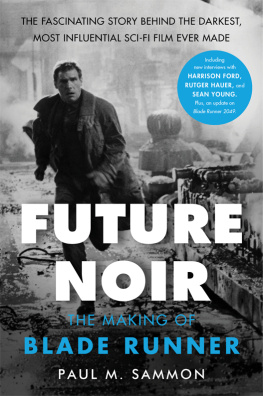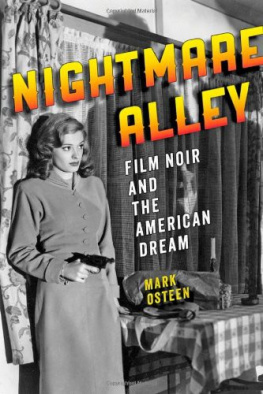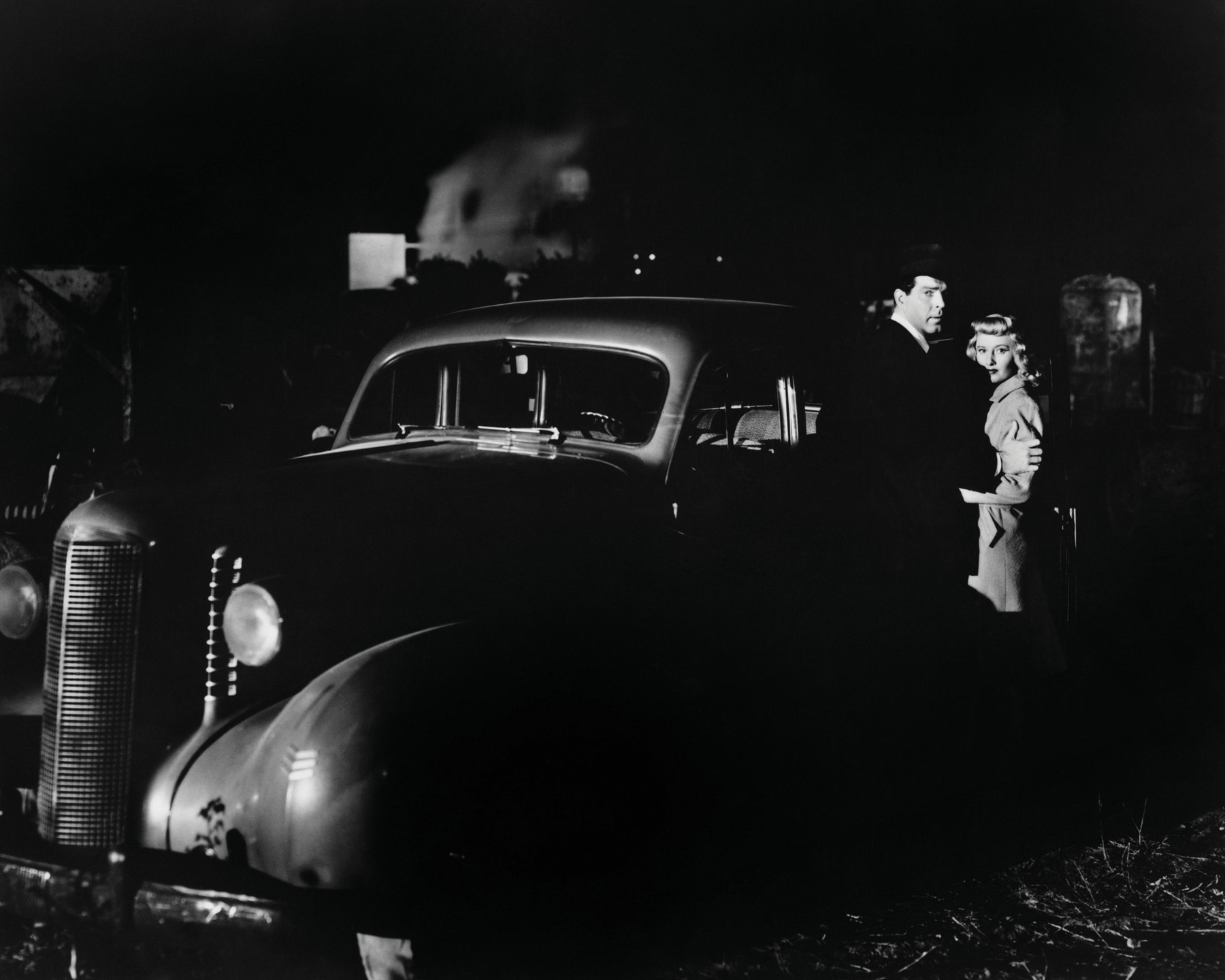Further explanation awaits in the Afterword, at the conclusion of our journey.
Film noirs were distress flares launched onto Americas movie screens by artists working the night shift at the Dream Factory. Some shell-shocked craftsman discharged mortars, blasting their message with an urgency aimed at shaking up the status quo. Others were firecrackersstartling but playful diversions. Either way, the whiff of cordite carried the same warning: were corrupt.
The nations sigh of relief on V-J Day ought to have inspired a flood of happily ever after films. But some victors didnt feel good about their spoils. Theyd seen too much. Too much warfare, too much poverty, too much greed, all in the service of rapacious progress. Unfinished business lingered from the Depressionnagging doubts about ingrained venality, ruthless human nature, unchecked urban growth throwing society dangerously out of whack. Artists responded by delivering bitter dramas that slapped romantic illusion in the face and put the boot to the throat of the smug bourgeoisie. Still, plenty of us took itand liked it.
I took it later, because I grew up in the 60s. Before I could tell Richard Widmark from Richard Conte I knew the films Id play hooky to watch on the familys Philco: Thieves Highway. Night and the City. Crime Wave. The Big Heat. Any movie with City, Night, or Street in its title listed in that weeks TV Guideyou could mark me absent from class. I went AWOL from catechism, as well. How could Sister Gretchen compete with Lizabeth Scott or Joan Bennett? The lessons Father McTaggart tried to impart werent as crucial as the ones instilled by Robert Mitchum and Humphrey Bogart. If they wanted us to understand the Ten Commandments they should have screened Out of the Past, Force of Evil, They Wont Believe Me, Side Streetcome to think of it, the Good Book would make one hell of a film noir.
In the 70s, an ever-expanding catalog of criticism emerged that tried to capture and deconstruct every frame of noir. Essayists argued over what it was and which films qualified. Was noir a genre? Was it a style? Academics tried to pin it down and dissect it. In the process they managed to drain the lifes blood out of the films.
This book is an attempt to resurrect these movies for another generation, to make them as vivid as they were when I first saw themor when our parents and grandparents did.
Of all the varieties of films Hollywood produced during the glory days of the studio system, noirs hold up best. Theyve got vivid characters and thematic weight and an inspired vision that preserves their vitality. When they fail to meet that tall order, theyve got style and sass to die for. While some studio fare of the 40s and 50s has slid into campiness, or decayed into toothless nostalgia, film noir has kept its bite. Enjoy it for the surface allure, or venture further into the scorched existentialist terrain.
Conventional wisdom has branded these films bleak, depressing, and nihilisticin fact, theyre just the opposite. To me, film noirs were the only movies that offered bracing respite from sugarcoated dogma, Hollywood-style. They werent trying to lull you or sell you or reassure youthey insisted you wake up to the reality of a corrupt world. Quit kidding yourself. Stand up, open your eyes, and be ready for anything. Prayers go unheard in these parts.
Film noir pointed toward the dark core of corruption in our civilized society and our primitive essence. The struggle of the individual to transcend or escape provided the emotional tension. Thats the theme that makes noir so compelling for contemporary audiences. The films still connect, even without dissertations on the men and women who made them, or classes on the social pressures that informed their creation. Of all the postures proffered by Hollywood in the twentieth century, noir has proven to be the most prescient. Sadly, were nowhere near as stylish anymorebut the corruption is thicker than ever.
So lock your door, would you? And hold on. We are taking a little ride. Seatbelts wouldnt do much good, even if we had them. Remember, once we cross the Dark City limits the meters double and theres no going back.
This trip is going to take us through all the finer neighborhoods. Well hit Sinister Heights, Shamus Flats, Blind Alley, Vixenville, and maybe Losers Laneif we make it that far. Well be hustling in and out of cheap hotels, seedy nightspots, and lonesome roadside diners. Youll get reacquainted with some folks in these dank corners, ready to spill their bitter life story before retreating to the shadows. Be ready to crack wise even as a trickle of cold sweat runs down your spine.












